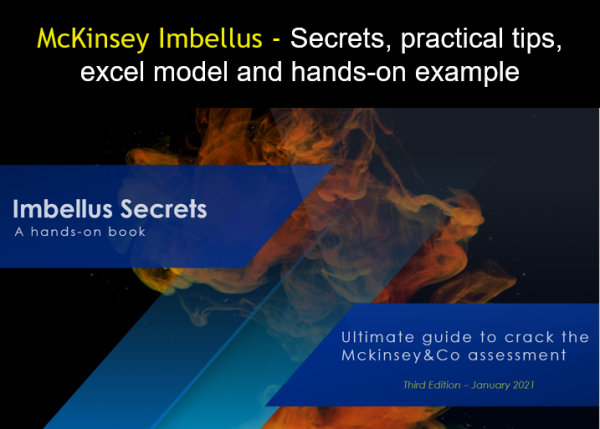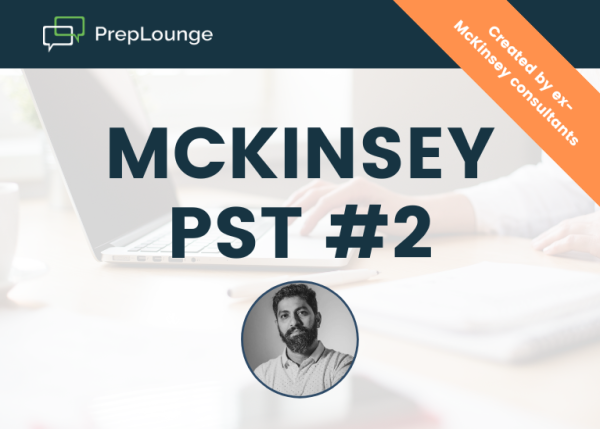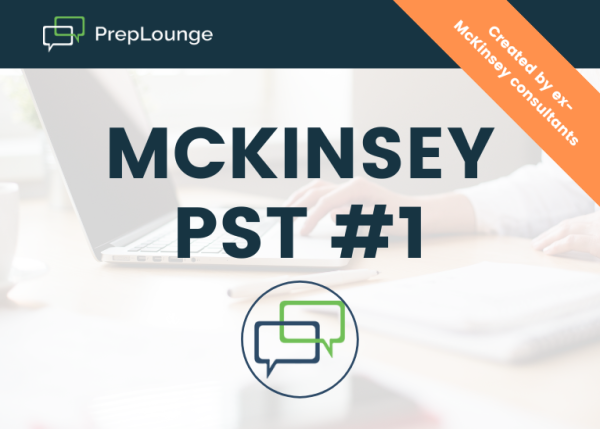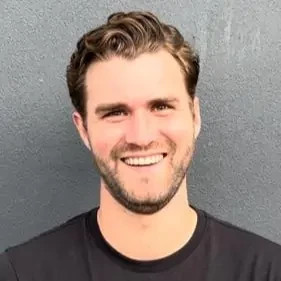I did a practice interview with someone working at MBB and the feedback I got was that I am really fast, very structured, and math skills are great and that I solved the case within time. However, I was told that I speak fast and have lots of ideas and the interviewer felt that I was not working with him or taking him along. He would be concerned that my approach will be an issue at the client as I may not be able to take the client along. He asked me to make sure that I slow down and take the interviewer along. What does 'taking the interviewer along' mean and how should I do it? I am concerned that if I slow down I perhaps might deliver a lower performance in terms of math, creativity etc.
Taking your interviewer along
Overview of answers
-
Upvotes
-
Date ascending
-
Date descending
Hi,
This basically means 2 things:
- Being structured and walking the interviewer through your structure
- Top-down communication
Here is a good list of articles that will help you:
1) Communicating while structuring. Here is a long post by me on how to communicate the structure during the case study:
2) Using hypothesis. I made a post about hypothesis here:
3) Communicating while making calculations:
- Always tell the interviewer your approach
- Check with the interviewer that your approach is correct
- Come to the interviewer with some preliminary answers
- Check your assumptions with the interviewer
4) Communicating during the analysis of graphs / tables
- Take a minute to look at the graph. Read the graph title. Look at the graph type and define the type (pie chart, line chart, etc). Look at the legend (ask for clarifying questions if necessary). Identify whats going on on the graph. Look for: Trends, % structures. Look for unusual things - correlations, outliers,
- Make 3-4 conclusions from the graph. Think out loud on potential hypothesis on what could be the root cause / what are the consequences
- Prioritize the most important for your current analysis and move forward with the case
5) Communicating while having questions on creativity
- Ask an interview for a minute to think
- Think of several buckets of ideas (e.g. organic growth / non-organic growth / differentiation). Remember to think as big as possible
- Narrow down to each bucket and generate as many ideas as possible
- Present the structure (buckets) and then your ideas
6) Communicating your conclusion. You can find a good example I've posted here:
7) Communicating your FIT stories
Use the top-down approach while communicating your stories. "The Pyramid Principle" is the must-read by ex McKinsey on this topic.
I recommend using the STAR framework:
- In Situation, you should briefly provide the context, usually in 1 or 2 sentences
- Task usually includes 2 or 3 sentences describing the problem and your objective.
- Then you provide a list of specific actions you took to achieve the goal. It should take 1 or 2 sentences per action (Usually 3-4 actions). Note that the interviewer can stop you any minute and ask for more details.
- The results part should have 1 or 2 sentences describing the outcomes. This part is finalizing your story - make sure it can impress the interviewer and stay in the memory.
Best!
(edited)

Related Products
McKinsey Solve Game Simulation Package by Francesco
- Play for Real the Ecosystem Game (Coral Reef & Mountain Ridge)
- Play for Real the Redrock Game (All 4 Phases Included)
- Receive for FREE the Imbellus Solve Combo and McKinsey Imbellus Game Secrets Guide
Break Into Consulting - Strategy Consulting Firm's All-In-One by Alexandre
- Created by 2 BCG consultants
- Covers most strategy consulting firms
- Get you to the backstage of the strategy world
Break Into Consulting - Industry Overviews by Alexandre
- Created by 2 BCG consultants
- 15+ industries covered
- Practical tips to master any industry
Break Into Consulting - Frameworks I wish I knew by Alexandre
- Created by 2 BCG consultants
- Covers most interview cases
- Practical tips to crack the case
BCG Online Case Combo: Software Simulation by Francesco
- Practice with 6 Chatbot Tests (Casey Style), including 4 Software Simulations
- Test Yourself with 4 Live One-Way Video Interviews (with AI Generated Tips)
- Receive for Free the BCG Online Case Secrets Guide
BCG Online Case Secrets by Francesco
- Master the 5 Types of Questions Asked by the Chatbot
- Discover the Exact Steps to Prepare for the 1-Minute Video Assessment
- Prepare in Advance by Solving 2 Complete Chatbot Cases
McKinsey Solve Game Combo: Guide + Videos by Francesco
- Watch how to Crack the Ecosystem Game in 23 Minutes
- Find Out how to Master each of the 4 Phases of the Redrock
- Receive for FREE the McKinsey Imbellus Solve Game Secrets Guide
Imbellus Test at McKinsey – Guide by Luca
- Detailed and full game analysis
- Hands-on example to solve the game and support you
- Practical tips to crack the game
McKinsey Imbellus Solve Game Secrets by Francesco
- Learn the Exact Steps to Crack the 7 Games of the Imbellus
- Discover the Proven Way to Master the 5 Skills Tested in the Game
- Create your Ecosystem Chain Automatically with the Automated Excel Included
The Secret McKinsey PEI Cheat Sheet by Robert
- Learn how to correctly prepare and structure your McKinsey PEI
- Impress your McKinsey interviewer with a perfect PEI
- Save tons of time in your PEI prep
BCG Potential Test #2 by Gaurav
- BCG Potential Test with 23 questions about "World Electrification Case"
- Created by ex-MBB interviewer Gaurav
- Format and style for a real test experience
BCG Potential Test #1 by Francesco
- BCG Potential Test with 23 questions about "CoverCell Case"
- Created by ex-BCG consultant Francesco
- Format and style for a real test experience
Prep Guide for McKinsey PST by PrepLounge
- McKinsey PST preparation guide incl. 13 pages of useful tips
- Created by ex-McKinsey consultants
- Detailed information on test structure, question types & core skills
McKinsey PST #3 by Riccardo
- PST with 26 questions about "Delicious Juice Case"
- Created by ex-MBB consultant Riccardo
- Industries: Beverage, tourism, pharma
McKinsey PST #2 by Gaurav
- PST with 26 questions about "WeKlin Case"
- Created by ex-McKinsey consultants
- Industries: Retail, energy, franchise
McKinsey PST #1 by PrepLounge
- PST with 26 questions about "FloraFashion Case"
- Created by ex-McKinsey consultants
- Industries: Retail, energy, franchise
Related Articles
BCG Potential Test
Consulting Interview Questions
What Does a Management Consultant at MBB Do?
BCG Case Interview
The Differences between MBB and the Big Four
Management Consulting Firms in Singapore
Related Cases
Related Case Interview Basics article(s)
Influence Model
The Influence Model by McKinsey emerged in the early 2000s and is the result of practical experience of the consultants at McKinsey & Company.
McKinsey Imbellus Game
Find out what the McKinsey Imbellus Game is all about. Get specific insights on how to ace your case interview at McKinsey.
7S-Framework of McKinsey
Discover what McKinsey's 7S framework is and how it helps companies maximize their strengths and identify weaknesses while focusing on 7 internal elements.
BCG Online Case
Get to know the BCG Online Case and learn how to approach this specific Boston Consulting Group Test when you want to start your careere in Consulting.
McKinsey Growth Pyramid
Structured framework for sustainable corporate development, including market penetration, product development, market development and diversification.
Related Products

McKinsey Solve Game Simulation Package by Francesco

Break Into Consulting - Strategy Consulting Firm's All-In-One by Alexandre

Break Into Consulting - Industry Overviews by Alexandre

Break Into Consulting - Frameworks I wish I knew by Alexandre

BCG Online Case Combo: Software Simulation by Francesco

BCG Online Case Secrets by Francesco

McKinsey Solve Game Combo: Guide + Videos by Francesco

Imbellus Test at McKinsey – Guide by Luca

McKinsey Imbellus Solve Game Secrets by Francesco

The Secret McKinsey PEI Cheat Sheet by Robert

BCG Potential Test #2 by Gaurav

BCG Potential Test #1 by Francesco

Prep Guide for McKinsey PST by PrepLounge

McKinsey PST #3 by Riccardo

McKinsey PST #2 by Gaurav






